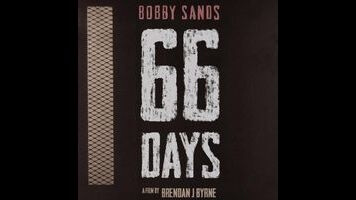Bobby Sands’ historic hunger strike gets a thorough, thoughtful documentary

When it comes to both the daily news and the history books, a proper definition can be everything, affecting how we weigh the story being told. When a hunger strike ended the life of Irish republican Bobby Sands and a handful of other inmates at Her Majesty’s Prison Maze in Northern Ireland, it changed the tone of the conversation about the Troubles between the British government and rebellious Northern Irish Catholics. Activists who’d been branded as terrorists were re-evaluated as martyrs, which met one of the main goals that Sands and his comrades had originally set with their protest: to be recognized as political prisoners, not criminals. Even now, not everyone is willing to accept those terms—especially if their lives were directly affected by Irish Republican Army violence. But at the time, what the hunger strikers did was enough to get the media more focused on the rightness of their cause than the damage wrought by some of their methods.
Brendan J. Byrne’s documentary Bobby Sands: 66 Days is another attempt to reframe the narrative around the struggle for independence in Northern Ireland. The clash between Irish republicans and the British government—with the latter supported by mostly Protestant locals—has been the subject of multiple movies, which for the most part have dramatized guerrilla bombings, street riots, and martial law. Bobby Sands: 66 Days is more like a supplement to director Steve McQueen’s excellent 2008 film Hunger, which featured a young, almost unrecognizable Michael Fassbender playing a fiercely committed Sands. Byrne fills in some of the contextual gaps from McQueen’s picture, explaining the larger issues of what these prisoners were attempting to accomplish for their countrymen and their cause. Sensationalism is kept to a minimum.
While 66 Days’ sympathies clearly lie with Sands, Byrne maintains enough intellectual remove to avoid making this a story of good and evil. The film’s approach is very matter of fact: Here’s what life was like for some Northern Irish Catholics as unwilling British subjects—but also, here are the innocents who were shot, beaten, and blown up by revolutionaries. The doc grounds Sands’ strike in what some see as a century of honorable populist revolt in nations as disparate as Vietnam, Cuba, and China, and what others see as a century of unconscionable violence committed by those same citizens. Byrne has interviews with people on both sides of the Northern Ireland conflict, along with photographs and news clips that capture how rough the times were for everybody.
The news footage is key. Much of the archival material comes from the British press, which at the time described what Sands and his fellow protestors were doing in the most unflattering terms. Prior to the hunger strike, prisoners in the Maze H-Block had tried multiple group actions to make their case, from wearing blankets instead of the required uniforms to smearing their walls with their own filth. But those proved counterproductive, fixing the image of these men as feral savages to the larger public (who were being told on TV all the time about the comfortable conditions and generous rehabilitation opportunities at Maze). The longer the self-starvation went on, though, the more the media came around to what the prisoners were attempting to say. And when Sands was elected to Parliament mid-strike, his political status seemed impossible to deny—especially overseas in the United States, where the press and even some Irish-American politicians were less caught up in the nuances of the situation.
The emotional reserve of 66 Days can make the film feel a little dry at times, given that it’s about something as visceral as a man starving himself to death. But Byrne does a fine job of juggling a lot of information, which he does by starting with the immediately arresting story of Sands and then jumping back in time. Throughout the doc, details of the strike are intercut with a brief history of the IRA, and explanations of how the changing political situation around the world—including the elections of Margaret Thatcher and Ronald Reagan—factored into how everything played out. A move toward peace and reconciliation in Northern Ireland over the past two decades can make what happened there throughout the 20th century seem more distant, with its original meaning increasingly muddled. But 66 Days brings those fights back to life, by reraising the matter of classification. Who were the heroes here? Who were the villains? Or have those always been the wrong questions to ask?